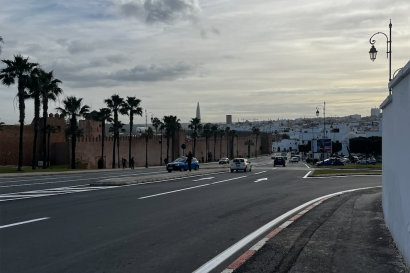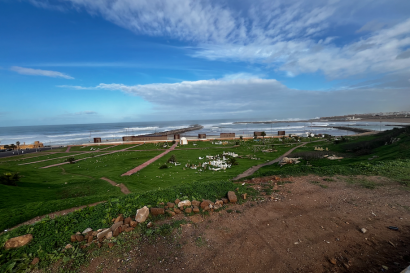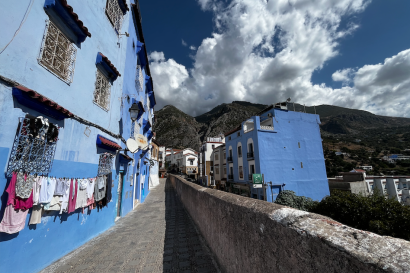In chambers underneath the ancient city of Fez, men sit tending the flames of furnaces. The rooms are cavernous but half-filled with sawdust, like great sand dunes; the men perch on them, stirring the embers.
Above them, the Fez's old city bustles like a beehive, its streets filled with vendors and buyers and tourists, but you wouldn't know that, sitting among these fire-feeders. The city's many voices do not reach them. Crouched there in the dust and shadows, I felt like I had stumbled on Fez's beating, burning heart.
The fires heat the water for Fez's hammams, the traditional baths in Morocco, where you wander through rooms thick with steam and scrub your skin raw. The water is boiling. You emerge glistening and soft as a newborn.
There were three men, older, with lined faces and hands. They spoke quietly. Their voices were lost in the sounds of the fire.
I had arrived in Fez that day for a story. I've spent the semester working as a reporter for a news publication here in Rabat, and the job has taken me to corners of Morocco I never expected to visit: courthouses and boarded-up synagogues and taco shops. This particular weekend, my editor wanted the help of myself and my friend (photojournalist—and fellow IES Abroad student) reporting on Fez's old medina, where he is from.
As Fez has modernized, many of its traditional craftsmen, unable to compete with imported products, have been forced to shut their doors and sell their shops. We were talking to those who remain.
If you look, though, the Fez medina is not—at all—a city of closed doors. We arrived with little agenda, with no scheduled meetings with vendors or craftsmen. Instead, we wandered, and the city opened up before us. That's the most important lesson I've learned since arriving here. You should travel by asking questions. Then everyone becomes storytellers.
There are 9,000 streets in Fez's old city, as tour guides like to say to bemused tourists. Whatever the real figure is, it's a truly incredible place to visit. The streets all spidered out before us; at every turn, there was another shop, another fruit stand, another sewing room. We walked, endlessly, armed with questions.
Our questions led us to the last comb-maker in all of Fez, who is dedicated to the dying craft, though he struggles to compete with imported products. He sits barefoot and crosslegged at the floor of his shop, hammering at bull horns to make delicate, iridescent combs and jewelry. They led us to a tiny room in a back alley where men sat making traditional shoes, snipping at leather with comically large scissors. They led us to tea-brewers and weavers and tailors. Those who spoke to us will have their stories broadcasted for Morocco and the world, to bring attention to the importance of preserving their work.
I don't pretend to know Fez's streets fully, or understand the complexities of the lives of its artisans or the ways things are changing. That day, though, watching the churning orange embers of the fire, I felt we had a glimpse of all the gears ticking below the city's streets, it's burning essence. All we'd had to do was ask.

Katya Schwenk
<p>I'm at junior at Georgetown, studying government, creative writing, and Arabic. I grew up in Vermont and Massachusetts. Interests include (but are not limited to!) radio, poetry, hiking, and beekeeping.</p>








